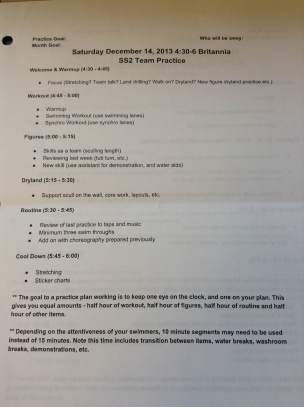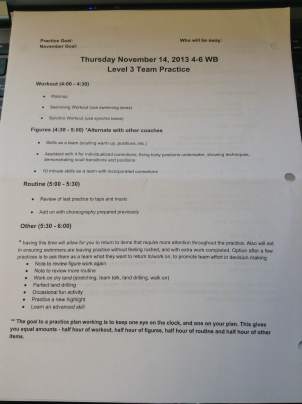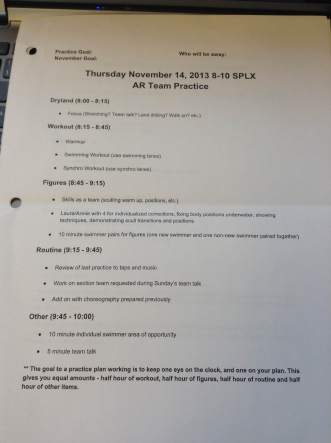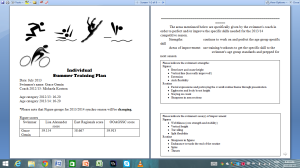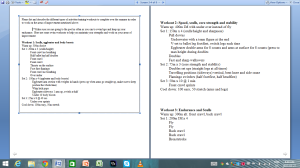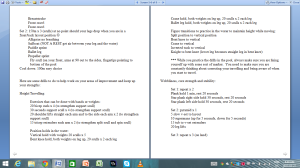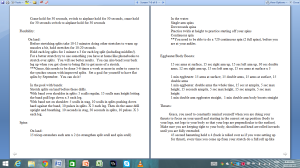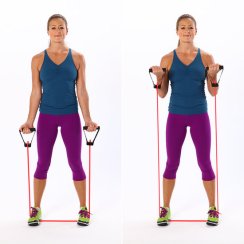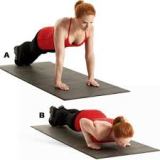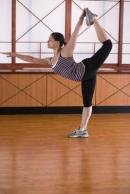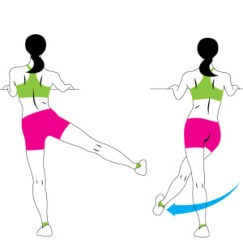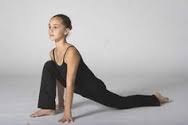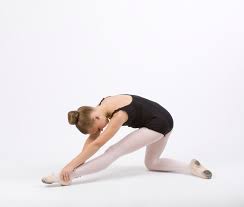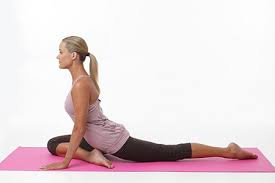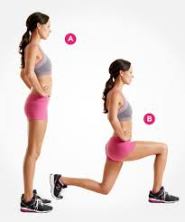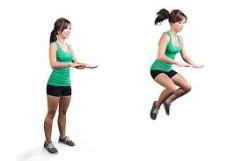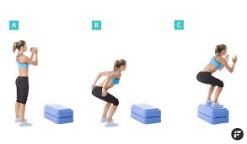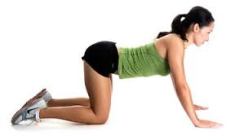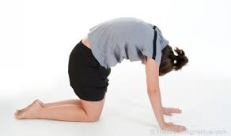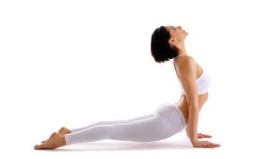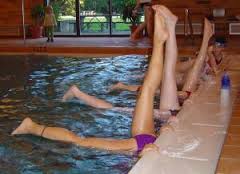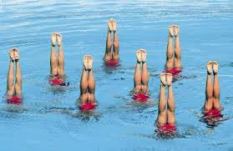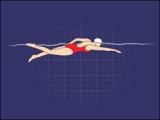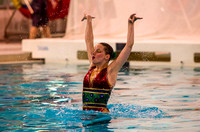Once the athletes are fueled they are ready to train having obtained the required nutrients and fuel to get them through practice. They need to be training their body successfully to have the optimal success in the sport. However, throughout the different levels there are different training programs and styles that develop the athletes in different ways that help those athletes succeed in their level of sport.
4.1 Recreational Level Training Methods
At the recreational level there is an emphasis put on fun and the coaches are supposed to create a very relaxed and not strenuous environment while the girls are at practice. That being said the athletes are still learning the skills required for their level within the sport but they are learning in a fun and creative way as promoted by Nepean Synchro. (http://www.nepeansynchro.com/2014-15-recreational-season/program-info-2014-2015-1)
Recreational team practices are organized differently and are longer depending on the level of the swimmers. The young teams, of girls ages 7-8, practice for 1.5 hours a week while older teams, of girls ages 9 and up, practice 2 hours per week. Then there is the Advanced Recreational level, for girls ages 13-18, which practices for 4 hours a week and is the most demanding level, commitment wise, in the recreational stream.
For very young swimmers they do very few laps during practice, change activities often to make sure to keep the young athletes’ attention for the entire practice, as well as incorporate games into all of the skills being learned. They do a total of 8-16 lengths throughout the entire practice and focus on 3 or 4 skills throughout the practice time. They will learn a new skill, practice it, then play a game that requires them to use that skill to win. This way they are learning the proper technique as well as a situation where that technique is used and must be used in order to be successful. Then when they practice that skill in a routine situation they have the foundation and the fun attitude associated with that skill that makes their synchro experience to be more fun. Here are examples of practice plans for three different levels of recreational teams. These templates are taken from the 2013 recreational coaching program at Nepean Synchro and were resources for the coaches to help them plan their practices effectively.
You will notice throughout all three of these templates that the coaches make a practice goal as well have a monthly goal so that they are able to focus their practices accordingly to their season’s training plan. They also have time put aside for dryland training to promote cross training in the recreational level so if/when they move up to competitive they are more accustomed to the idea. They also all do 15 plus minutes of laps and workout to warm up the athletes for their practice. They all then proceed to focus on the more synchro specific aspects of practice such as routine and skill development. Overall the recreational teams practice enough to succeed in their level and fulfill the goal of having fun and building a love for the sport. (http://www.nepeansynchro.com/2014-15-recreational-season/program-info-2014-2015-1)
4.2 Competitive Level Training Methods
Competitive teams train significantly more than recreational teams, often practicing 6 times a week with both drylands and water practices, lasting for a minimum of 2 hours at a time. There are often extra practices available too which result in the competitive swimmers practicing for a total of 15.5 hours in a regular week. (http://www.nepeansynchro.com/competitive/training-schedule-1) This training program is comprised of many different types of training such as endurance, aerobic and anaerobic training, on land cross training, and routine specific training. Coaches use specific training methods to best train their athletes to perform to the level they are wanting. Here is an example of a summer training program made for me by my coach at the time, Michaela Kostron, to help me to improve for the next season. This will give you an idea of the types of exercises that synchro swimmers do during practices and to train.
The first and second pages are about me as an athlete and my previous athletic achievements as well as weaknesses. The point of this training plan was to improve my weaknesses to make me an overall better swimmer and my coach had designed exercises specifically for that goal.
The first workout that she gave me was to improve my power and upward momentum in body boosts which are a very fast and sharp movement exploding from the water. This workout is designed to work out and hopefully improve my fast twitch fibres. It is also to improve my strength in eggbeater which is more of a slow twitch fibre workout since you do eggbeater for the majority of the routine that you are above water for. The second workout was for speed, sculls, core strength and stability. This focused on improving my vertical line while upside down by focusing on the core strength and stability as well as improve my vertical height through training my sculls and the speed of my sculls.
The third workout focuses on endurance and slow twitch fibres of the athlete. Building this endurance will increase the athlete’s lactic acid threshold and allow them to perform at a higher standard for longer periods of time.
The first three workouts are in the pool to promote sport situated exercise so that when the athlete, in this case myself, are thrust into a sport specific situation they are able to apply those trained skills.
The next few workouts are a combination of land workouts and in water workouts, promoting the cross training that helps athletes develop and improve in their sport outside of a sport specific situation. The training plan focuses on how doing exercises outside of the pool will also help athletes in the pool. My coach focused on five main things for me with the combined on land and in pool workouts; flexibility, spins, eggbeater and body boosts, thrusts, and sharpness in figures. For each of these skills she gave appropriate land workouts that benefit that specific skill as well as in water drills and exercises to practice and perfect the skills. She also provided descriptions of how doing these workouts and the exercises can contribute to the improvement of that skill. My coach had also worked with me privately throughout the year and knew aspects of skills that I often had difficulty with. She made sure to add specific corrections to those skills that she knew I had trouble with to help me focus on them and keep those corrections in mind when practicing. This training plan was very helpful and improved me as a swimmer. When I came back for the next season after the summer I saw an improvement and had an advantage since none of my teammates had been training over the summer and weren’t at the same level of fitness that I was at.
Even though this training plan is specific to me as a swimmer, a similar one can be applied to any athlete and practices are structured in a similar way. During practice athletes will practice skills by breaking them down and working on improving all the little elements that are a part of the skills as a whole and perfect those before chaining them all together to make the skill itself. Athletes practice these skills multiple times a week and for weeks on end in order to get them as close to perfect as possible since for most of the skills done at practice, they are evaluated on at competitions. Being a competitive synchronized swimmer requires a great deal of time commitment and dedication to yourself as an athlete and your personal athletic development, which in turn improves the team’s overall athletic ability.
4.3 Olympic Level Training Methods
If you thought the commitment in the competitive level was a lot then the necessary commitment for the Olympic level will blow your mind. “Olympic-level synchronized swimmers have a high volume and high-intensity training program of 7 hr/day for 6 days/week (Mountjoy, 2009). The training regimen involves not only the synchro-specific pool training but also additional training in weights, ballet, Pilates, speed swimming, acrobatics, flexibility, and conditioning.” (Robertson, S., Benardot, D., & Mountjoy, M. (2014)) “Elite synchronized swimmers need to be both aerobically and anaerobically fit. Current requirements for more acrobatic manoeuvres may now involve less time spent underwater, but the long training sessions associated with the sport mandate a high level of fitness.” (Robertson, S., Benardot, D., & Mountjoy, M. (2014)) “The gymnastics-type movements that are performed within the high resistance of water requires that athletes develop a broad range of cardiovascular and musculoskeletal strength, typically attained through running, cycling, swimming, and practicing competition routines. Off season training commonly involves the use of free weights and plyometrics to improve leg and core strength. The typical training schedule involves the establishment of a quadrennial plan, usually established by national teams, which outlines the training goals and objectives of the 4 years leading up to the Olympic Games. The yearly training plan is divided into macrocycle, mesocycle, and microcycle phases, and the nutritional requirements of synchronized swimmers vary depending on the training phase and the volume and intensity of the work being performed.” (Robertson, S., Benardot, D., & Mountjoy, M. (2014))
Olivia Allison is an Olympic synchro swimmer for the United Kingdom. She practices 6 days a week and her weekly plan is outlined below. This is an example of what any Olympic synchro swimmer generally does for her training. (Allison, O. (2009, January 10))
My typical week
Monday
7-8am: Warm-up. I run on the spot to get warm, do 30 sit-ups and other core muscle work and use resistance bands to get my arm and leg muscles working. I also practise stretching and the splits.
8-9.30am: 5,000m of speed training in the pool. This involves both power and endurance sets using a combination of strokes, and we do monthly timed swims of 400m.
9.30am-12.30pm: Routine training in the pool.
2.30-3pm: Land drills (a walk-through of the routines on land).
3-5pm: Routine training in the pool.
Tuesday
7-9am: Strength training and conditioning. We have set individual programmes designed to target weaknesses, enhance strengths and avoid injury tendencies. The muscles being worked are related to pool work.
9am-1pm: Routine training in the pool.
Wednesday
As Monday.
Thursday
As Tuesday.
Friday
7-8am: Land warm-up.
8-9.30am: Speed training in the pool.
9.30am-1pm: Routine training in the pool.
Saturday
8am: 30-minute land warm-up and stretching followed by a cardio workout in the gym.
9.30am: Strength training and conditioning.
11am-12noon: Stretching, flexibility training such as over splitting (where the legs split over 180 degrees for extra flexibility), gymnastics.
Sunday
Day off. I don’t have a lot of spare time, but when I’m not training I lifeguard to earn some extra money or I see my boyfriend. My training hours will gradually increase as I get closer to competitions.
(Allison, O. (2009, January 10))
This type of training is what Olympic synchro swimmers must do to maintain their body composition, muscle mass, endurance, and aerobic and anaerobic strength.
Here are some examples of exercises that synchro swimmers would do in their weekly training.
Core training: sit-ups, plank holds, bicycle crunches, hanging leg raises
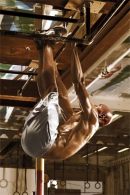 hanging leg raises
hanging leg raises  bicycle crunches
bicycle crunches 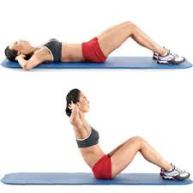 sit ups
sit ups
Arms: support scull with bands, arm curls, pushups (tricep and regular)
Flexibility: scorpion, forward backwards stretch, pigeon, leg swings (forward, backwards, sideways)
Plyometric exercises: high kicks, butt kicks, lunges, ankle hops, tuck jumps, squat jumps, box jumps, cone hops
Stretching: As seen in this video syncho swimmers have to stretch out their body before they swim. This is only an arm and leg stretch video, leg swings (forward, backwards, sideways), back stretches (arching, cat and cow, child pose), leg stretching (touching your toes, straddle and reaching to each foot and the middle)
Routine training: swimming routine with weights, practicing sections to music or taps, practicing with partner, working on one specific figure or arm until perfect
Swimming training: synchro IM (underwater, back crawl, breast stroke, front crawl), endurance training (400m timed swim, sets including unders and front crawls), breathing and no breathing sprints, synchro sets (sets with synchro laps included, a lap of ballet leg, a lap of vertical travelling sideways, under with a figure at the end)
(Koh, S. (2014, March 17), http://www.mensfitness.com/training/build-muscle/the-go-hard-core-workout-routine)
These are just a few examples of exercises that you can do, there are many other options but these are the kinds of exercises that are done during practices and are expected of athletes to do at home as well.
4.4 In Conclusion
The training methods for the different levels vary greatly in difficulty and requirements since the different levels demand different things from their athletes. They all demand dedication and a certain level of athleticism for the athletes to be able to succeed in the sport. The recreational level demands less of the athletes and isn’t nearly as an intense training program. The competitive program is slightly more intense and demanding of its athletes. It is a big step up from the recreational program but not as big a step up from the competitive program to the Olympic training program. Olympic level synchro swimmers dedicate their whole life to training and the results really pay off when they get to go and represent their country on an international scale and stand on that podium.
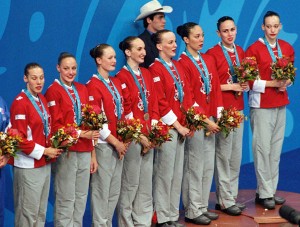
L’équipe de nage synchronisée du Canada célèbre après avoir remporté la médaille de bronze aux Jeux olympiques de Sydney de 2000. (Photo PC/AOC)
Photo: http://www.collectionscanada.gc.ca/obj/001064/f1/0914synchro7-v6.jpg
